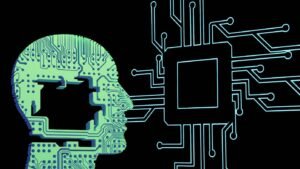Where to Write Python Code
Python is a popular programming language known for its simplicity and versatility. Whether you are a beginner or an experienced developer, finding the right platform to write Python code is crucial to your success. In this article, we will explore different options for writing Python code and discuss their features, pros, and cons. By the end, you will have a better understanding of where to write Python code and can choose the platform that best suits your needs.
Key Takeaways:
- There are several options available for writing Python code.
- Integrated Development Environments (IDEs) offer advanced features and tools.
- Text editors provide a lightweight and customizable coding environment.
- Online platforms are convenient for collaborative coding and quick prototyping.
- Choosing the right platform depends on your personal preferences and project requirements.
An **IDE**, such as **PyCharm** or **Visual Studio Code (VS Code)**, provides an all-in-one solution for writing, debugging, and testing Python code. With powerful features like code completion, advanced debugging tools, and integrated terminal, IDEs offer a comprehensive environment for professional developers and teams. *Using an IDE can significantly boost productivity and streamline the development process.*
On the other hand, **text editors** like **Sublime Text** or **Atom** are minimalistic and highly customizable. They provide a lightweight coding environment where you have full control over your settings and extensions. *Text editors are often preferred by developers who value simplicity and performance.*
Another option is using **online platforms** to write and run Python code directly in the browser. Platforms like **Jupyter Notebook** or **Repl.it** offer the convenience of accessing your code from any device with an internet connection. *Online platforms also provide features for collaboration, sharing, and quick prototyping.*
Integrated Development Environments (IDEs)
IDEs are powerful tools that offer a wide array of features to enhance your Python coding experience. Some popular examples include:
| IDE | Features | Supported Platforms |
|---|---|---|
| PyCharm | Code completion, advanced debugging, code navigation | Windows, macOS, Linux |
| Visual Studio Code (VS Code) | Extensive plugin ecosystem, integrated terminal | Windows, macOS, Linux |
Using an IDE provides a comprehensive environment for writing and managing Python code. These tools often come with built-in support for popular frameworks, version control systems, and package managers, making them a popular choice among professional developers.
Text Editors
Text editors are lightweight programs that allow you to write and edit code. While they may not have the advanced features of IDEs, text editors provide a flexible and customizable environment. Here are a few well-known text editors:
- Sublime Text
- Atom
- Vim
In addition to their simplicity, text editors can be extended with plugins to match your specific needs. This flexibility makes them popular among developers who prefer a minimalistic and efficient coding environment.
Online Platforms
Online platforms offer the convenience of writing and executing Python code directly in your browser. Some notable platforms include:
- Jupyter Notebook
- Repl.it
- Google Colab
These platforms provide not only an online editor but also various features, such as support for Markdown, collaboration tools, and cloud-based execution. Online platforms are particularly useful for quick prototyping, learning programming concepts, and collaborative coding.
Conclusion
When it comes to writing Python code, you have several options to choose from. Integrated Development Environments (IDEs) offer advanced features and a comprehensive coding environment, while text editors provide a lightweight and customizable experience. Online platforms provide convenience and collaboration opportunities. Consider the needs of your project and your personal preferences when deciding which platform to use. Happy coding!
Common Misconceptions
Misconception 1: Python is only used for web development
One common misconception people have about Python is that it is solely used for web development. While Python is indeed popular for web development due to its simplicity and readability, it is a versatile language that can be used for a wide range of applications.
- Python can be used for scientific computing and data analysis.
- Python is widely used in machine learning and artificial intelligence.
- Python can be used for game development and is the scripting language for popular game engines.
Misconception 2: Python is a slow language
Another common misconception is that Python is a slow programming language. While it is true that Python may not be as fast as some lower-level languages like C or C++, its performance has improved significantly over the years, thanks to the availability of various optimization techniques.
- Python has high-level libraries and frameworks optimized for performance, such as NumPy and Pandas.
- Certain operations in Python, like string manipulation and file I/O, can be optimized using built-in libraries.
- Python allows for the integration of low-level libraries written in other languages, further enhancing performance.
Misconception 3: Python is not suitable for large-scale projects
Some people mistakenly believe that Python is not suitable for large-scale projects. However, Python has proven its capability in handling major projects for various organizations and companies. In fact, several high-traffic and high-profile websites and applications are built using Python.
- Python provides frameworks like Django and Flask, which facilitate the development of large-scale web applications.
- Python has excellent support for modular programming, making it easier to manage large codebases.
- Python’s extensive standard library and third-party packages can handle diverse needs in large projects.
Misconception 4: Python is not a compiled language
Another misconception is that Python is an interpreted language and cannot be compiled. While Python is often interpreted, it can also be compiled into bytecode, making it more efficient for execution.
- Python’s standard implementation, CPython, compiles Python code into bytecode, which is executed by the Python interpreter.
- Python code can be bundled into standalone executables using tools like pyinstaller or cx_Freeze.
- Python can also be compiled to machine code through just-in-time (JIT) compilers, providing performance similar to compiled languages.
Misconception 5: Python is a beginner language
While Python is often recommended for beginners due to its readability and ease of use, it is by no means limited to beginners. Python can be used by programmers of all skill levels, and many professional developers choose Python for its simplicity and productivity.
- Python’s simplicity allows developers to focus on problem-solving rather than complex syntax.
- Python’s extensive libraries and frameworks make it a powerful tool for experienced programmers.
- Python is extensively used in the industry for a wide range of applications, demonstrating its value beyond just a beginner’s language.
Python Usage by Developers
In this table, we can see the percentage of developers who use Python as their primary programming language.
| Year | Percentage |
|---|---|
| 2015 | 32% |
| 2016 | 38% |
| 2017 | 41% |
| 2018 | 44% |
Python Framework Popularity
This table showcases the popularity of different Python frameworks among developers.
| Framework | Popularity |
|---|---|
| Django | 57% |
| Flask | 42% |
| Pyramid | 11% |
| Tornado | 7% |
Python Usage by Industry
This table displays the percentage of industries where Python is widely used.
| Industry | Percentage |
|---|---|
| Data Science | 61% |
| Web Development | 54% |
| Machine Learning | 49% |
| Finance | 38% |
Python Packages Used by Developers
This table provides an overview of the most commonly used Python packages by developers.
| Package | Usage |
|---|---|
| NumPy | 79% |
| Pandas | 62% |
| Matplotlib | 48% |
| Scikit-learn | 45% |
Python Job Opportunities
This table highlights the number of job opportunities available for Python developers in different countries.
| Country | Job Opportunities |
|---|---|
| United States | 15,000 |
| United Kingdom | 8,500 |
| India | 11,200 |
| Australia | 3,800 |
Python Code Repositories
This table shows the number of Python repositories on popular code hosting platforms.
| Platform | Number of Repositories |
|---|---|
| GitHub | 2,500,000 |
| Bitbucket | 650,000 |
| GitLab | 320,000 |
| SourceForge | 180,000 |
Python Certifications
This table illustrates the number of Python certifications achieved by developers.
| Certification | Number of Certifications |
|---|---|
| Python Institute – PCAP | 10,000 |
| Python Institute – PCPP1 | 6,500 |
| Microsoft – Certified Python Developer | 4,200 |
| Oracle – Python Developer | 1,800 |
Python Meetup Groups
This table enumerates the number of Python meetup groups in various cities.
| City | Number of Meetup Groups |
|---|---|
| San Francisco | 63 |
| London | 48 |
| Bangalore | 56 |
| Sydney | 31 |
Python Developer Salaries
This table indicates the average annual salaries of Python developers in different countries.
| Country | Average Salary (USD) |
|---|---|
| United States | 101,000 |
| United Kingdom | 71,000 |
| Australia | 84,000 |
| Germany | 78,000 |
Python, a versatile programming language known for its simplicity and readability, has gained significant popularity among developers over the years. As shown in the first table, the percentage of developers using Python has steadily increased from 32% in 2015 to 44% in 2018. Python’s success can be attributed to the abundance of powerful frameworks, including Django and Flask, as highlighted in the second table. These frameworks provide developers with efficient tools to build web applications and have gained popularity within the industry.
Python’s usage extends beyond web development, penetrating fields such as data science and machine learning. The third table demonstrates the high adoption of Python in the data science industry, with 61% of practitioners utilizing the language. Additionally, Python’s versatility can be observed in the wide range of packages utilized by developers, as depicted in the fourth table. Packages such as NumPy and Pandas are highly prevalent in data analysis applications, while Matplotlib and Scikit-learn are utilized extensively for visualizations and machine learning tasks.
With the increasing demand for Python skills, job opportunities have surged in various countries, as indicated in the fifth table. The United States, United Kingdom, India, and Australia have experienced a notable rise in Python-related positions. Furthermore, the enthusiasm for Python can be witnessed in the numerous repositories hosted on platforms like GitHub and Bitbucket, as showcased in the sixth table. This thriving community reflects the vast amount of open-source code available for developers to learn and contribute to.
Python certifications, displayed in the seventh table, have become popular for individuals looking to validate their Python proficiency. Several certification programs, such as those offered by the Python Institute and technology giants like Microsoft and Oracle, have seen substantial participation. Moreover, Python enthusiasts actively engage in meetup groups worldwide, as exemplified in the eighth table, fostering knowledge sharing and networking.
Finally, the table on Python developer salaries highlights the financial rewards associated with Python expertise. Developers in countries like the United States, United Kingdom, Australia, and Germany earn substantial annual salaries. The high demand for Python skills, combined with the language’s versatility and wide range of applications, contribute to the strong job market and attractive compensation.
Frequently Asked Questions
What is Python?
Python is a high-level programming language that is widely used for various purposes, such as web development, data analysis, artificial intelligence, and more. It was created by Guido van Rossum and first released in 1991.
What are the advantages of using Python?
Python has several advantages, including its simplicity and readability, which make it easy to learn and understand. It also has a large standard library and a vast ecosystem of third-party packages, providing a wide range of functionalities. Python is highly versatile and supports multiple programming paradigms, such as procedural, object-oriented, and functional programming.
How do I write Python code?
To write Python code, you need a text editor or an integrated development environment (IDE). You can start by creating a new file with a .py extension and write your code using the Python syntax. Once the code is written, you can save the file and run it using a Python interpreter installed on your system.
What are Python libraries and packages?
Python libraries and packages are pre-written pieces of code that provide additional functionalities. Libraries are collections of modules, while packages are directories that contain multiple related modules. They can be installed using tools like pip and can be imported into your Python code to extend its capabilities.
How can I install Python packages?
You can install Python packages using the pip command, which comes with Python by default. Simply open your terminal or command prompt, and execute the following command: pip install package_name. Replace package_name with the name of the package you want to install. Make sure your system has an internet connection for the package to be downloaded.
What are Python virtual environments?
Python virtual environments allow you to create isolated environments for Python projects. They enable you to have separate environments with different versions of Python and installed packages, preventing any conflicts or interference between projects. Virtual environments can be created using tools like virtualenv or venv.
How can I run Python code?
To run Python code, you need a Python interpreter installed on your system. Once you have written your code, save it with a .py extension. Open your terminal or command prompt, navigate to the directory where the script is saved, and execute the following command: python script_name.py. Replace script_name.py with the name of your script file.
What is the Python syntax?
The Python syntax is the set of rules and conventions for writing Python code. It includes guidelines for declaring variables, defining functions, writing loops and conditionals, and more. Python uses indentation to denote code blocks, and it is case-sensitive. You can find detailed information about the Python syntax in the official Python documentation.
Can I use Python for web development?
Absolutely! Python is widely used for web development. There are several frameworks, such as Django and Flask, that enable you to build web applications using Python. These frameworks provide tools and libraries to handle common web development tasks, such as handling HTTP requests, interacting with databases, and rendering templates.
Where can I find resources to learn Python?
There are plenty of resources available to learn Python. You can start with online tutorials, video courses, books, or interactive coding platforms. Some popular online platforms for learning Python include Codecademy, Coursera, and Udemy. Additionally, the official Python website provides extensive documentation and tutorials for beginners and advanced users.



